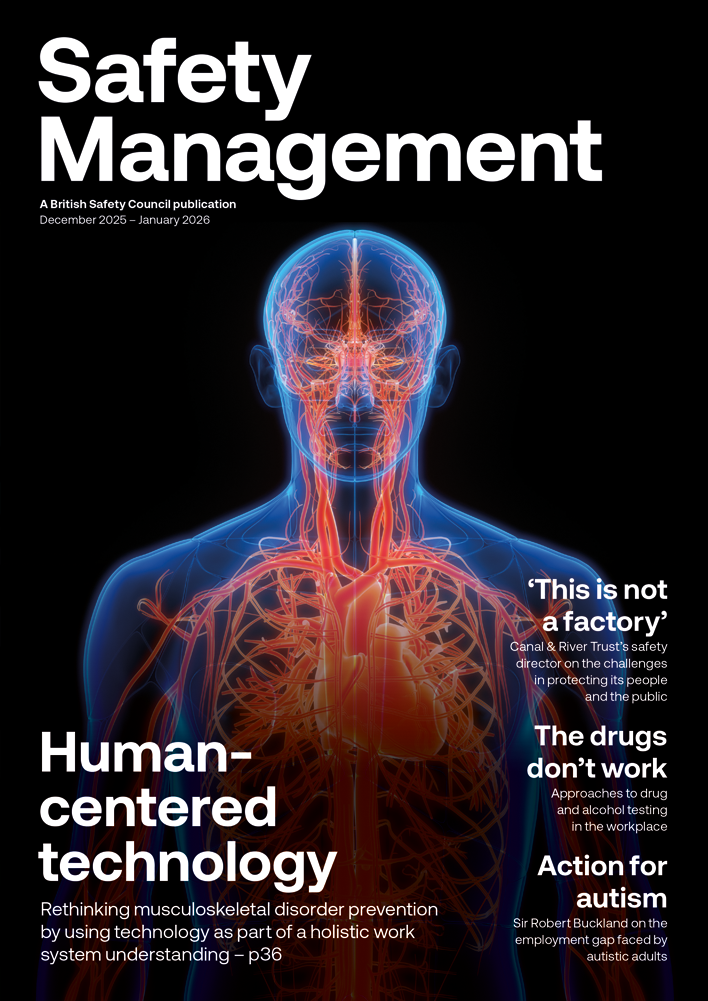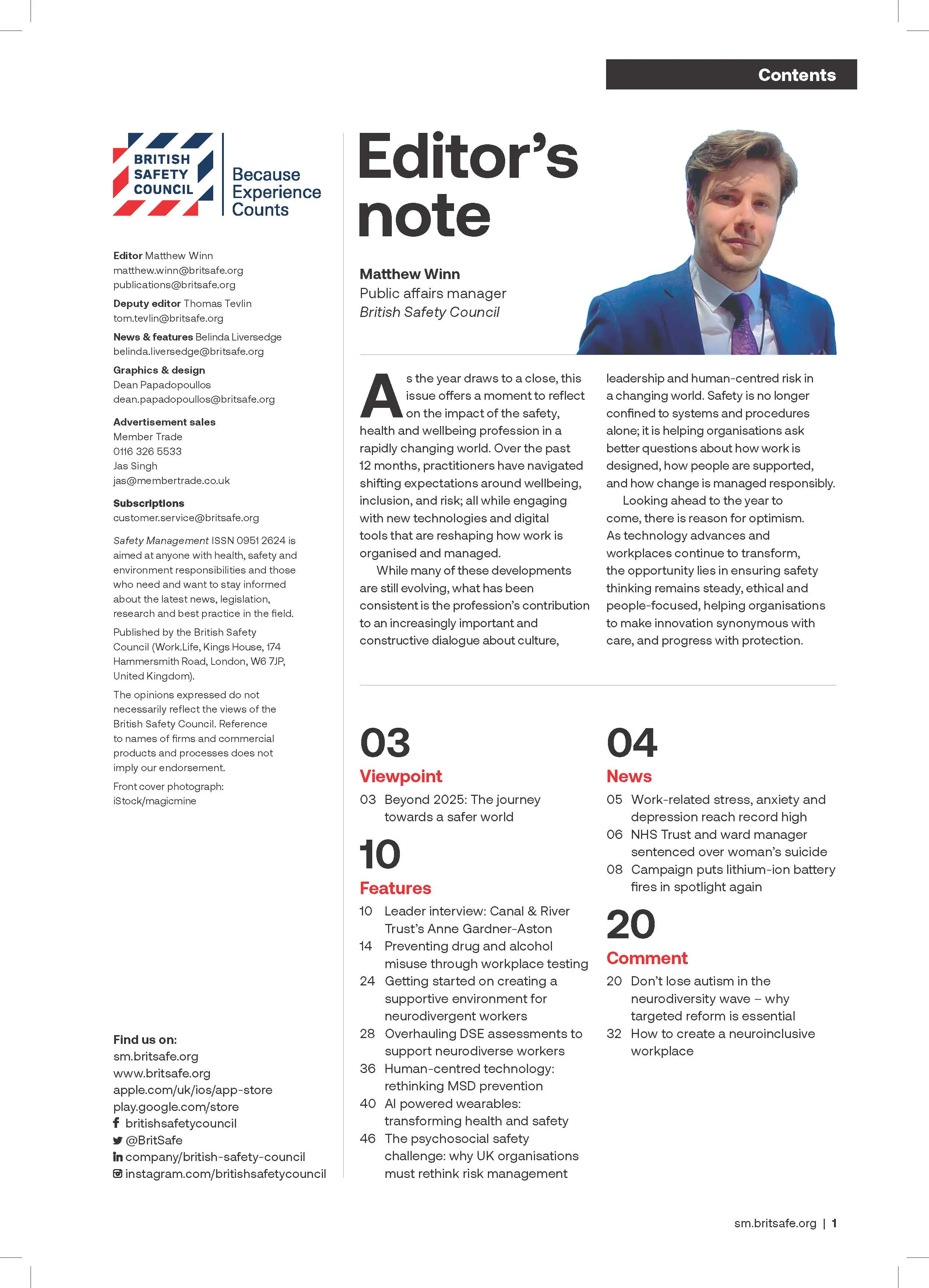Most people know and understand why it is important to maintain good ‘health’ and ‘safety’ in the workplace. But how comfortable do they feel talking about ‘wellbeing’ and what’s the best way to go about managing or affecting it at work?
Features
Joining the dots – why health, safety and wellbeing form a virtuous circle
We can all understand why roles involving manual labour, like heavy lifting, require special training in physical safety. Likewise, office (or home) based work requires an assessment of our physical workspace and even advice on how much we should sit, stand, or move about during the day.
The requirements may be different, but the intention is the same: putting steps in place to ensure that no one is injured or made ill through their work.
So if we all largely accept and agree on health and safety being important, where does wellbeing fit into the equation and how should it be ‘managed’?
This article will explore what we mean by wellbeing, look at how it has been approached up to now and consider how existing health and safety practices could help us manage it better in the future.
Many organisations deal with wellbeing from a ‘Human Resources’ (HR) perspective. This is understandable, given HR already handles sickness, absence, stress and other matters involving people’s health or performance at work. But this overlooks that wellbeing in its truest sense is broader than even our mental, physical or emotional health.
It can encompass our social, financial and even spiritual wellbeing. It is also not helpful to approach wellbeing as if you are fixing something ‘wrong’ with people. We should be trying to prevent issues occurring in the first place.
Perhaps we should first consider what we mean by each of the terms ‘health’, ‘safety’ and ‘wellbeing’.
Health
According to the World Health Organization (WHO): “Health is a state of complete physical, mental and social wellbeing and not merely the absence of disease or infirmity”. Although this definition refers to the concept of wellbeing, it doesn’t define wellbeing and of course doesn’t refer to safety.
Safety
Safety can be defined as “freedom from the occurrence or risk of injury, danger, or loss” and, as the Health and Safety Executive (HSE) says, health and safety “is about stopping you getting hurt at work or ill through work”.
Wellbeing
The British Safety Council goes even further to close the gap between the three terms, by defining wellbeing as “An individual’s ongoing state which enables a person to thrive”.
A guide produced by Mind and the CIPD on managing mental health at work refers to evidence of the link between rates of industrial accidents and mental ill health. There are many possible reasons for this connection. Poor mental health may in itself become a distraction, or lead to people taking less precautions. Even low levels of stress can lead to lower levels of control over our thoughts and actions.
Research by The Keil Centre commissioned by the HSE found that people who are stressed, anxious or depressed are more likely to be distracted by other thoughts and find it harder to focus on a task. So, poor mental health also affects other issues relating to health and safety in the workplace.
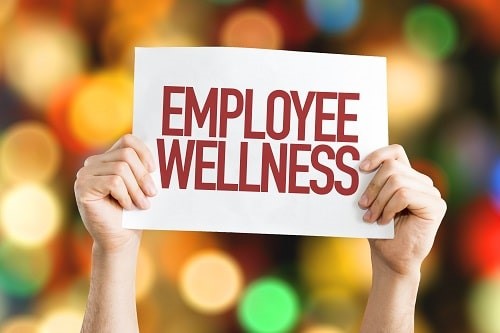 The British Safety Council defines wellbeing as an "individual’s ongoing state which enables a person to thrive." Photograph: iStock
The British Safety Council defines wellbeing as an "individual’s ongoing state which enables a person to thrive." Photograph: iStock
Turning to the impact of our physical health, a systematic review of the literature on health conditions and the risk of accidental injury showed that poor physical health increases the risk of accidents at work. This might be having impaired hearing or eyesight, or a health condition like diabetes.
However, while someone’s impaired hearing or eyesight is likely to be picked up and supported through a risk assessment, diabetes does not typically form part of a health and safety conversation. Given that poorly controlled diabetes could result in fainting and that over 4.9 million people in the UK have diabetes shouldn’t we be considering these sorts of risks as part of health and safety, let alone wellbeing?
A US study conducted over nine years looked at the relationship between obesity and injury among workers and found that overweight and obese manufacturing workers were 25 to 68 per cent more likely to experience injuries than normal weight workers. The study outlined that injuries were most commonly in the joints (ankles, knees, fingers, back) and were caused by sprains, strains and twists. As with poor mental health, we can see that poor physical health impacts on our health and safety, and therefore our wellbeing, in the workplace.
Furthermore, mental health and physical health can also affect each other. For example, people with severe mental illnesses may have a 53 per cent higher risk of developing cardiovascular disease than healthy individuals. Chronic back pain has also been associated with an increased likelihood of stress, depression, anxiety, and sleep disturbance.
An integrated approach to managing health and wellbeing
So, if mental and physical health are so closely linked, why are they so often dealt with separately and how does knowing this change the way we manage them at work?
As we have seen, occupational health and safety professionals have traditionally focused on protecting workers from ‘harm’. Safety was their main focus, with health an added bonus. In most workplaces, ‘safety’ programmes and ‘wellbeing’ programmes were kept apart from each other and managed by different departments.
But the evidence shows that thinking about health, safety and wellbeing in an integrated, joined up way can lead not just to a safer, happier and healthier workforce but also improved operating and financial outcomes for businesses.
Conversely, the dangers of an unhealthy or unsafe workplace are shown dramatically by the WHO in a flow diagram which we have reproduced above. This shows clearly why tackling health, safety and wellbeing as part of one conversation is so important.
The WHO states: “There is a wealth of data demonstrating that in the long term, the most successful and competitive companies are those that have the best health and safety records, and the most physically and mentally healthy and satisfied workers.”
Marcus Herbert is Head of wellbeing at the British Safety Council
FEATURES
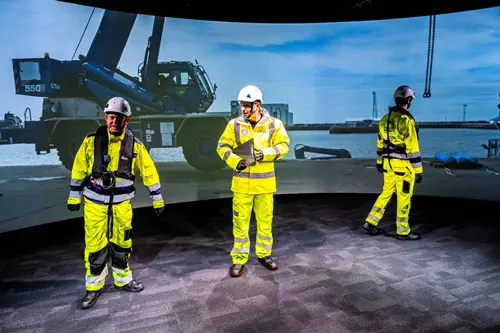
Underpinning safety training with neuroscience for long lasting impact
By SSE Active Training Team (ATT) on 30 November 2025
A behavioural safety training programme developed by Active Training Team for energy provider SSE has been carefully designed with neuroscientific principles in mind – resulting in a prestigious industry award for Best Training Initiative in 2024.
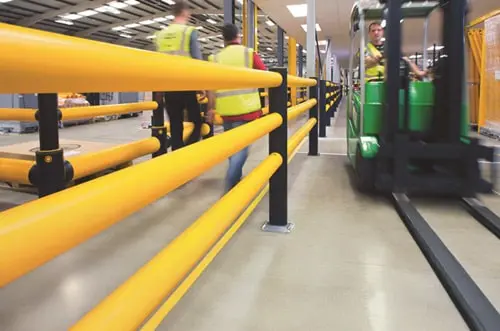
Why a painted line will never be enough
By UK Material Handling Association (UKMHA) on 20 November 2025
Businesses that operate material handling equipment like forklifts are being urged to submit accident and near miss details to a new confidential reporting portal so the industry can identify what needs to be done to improve safety standards.
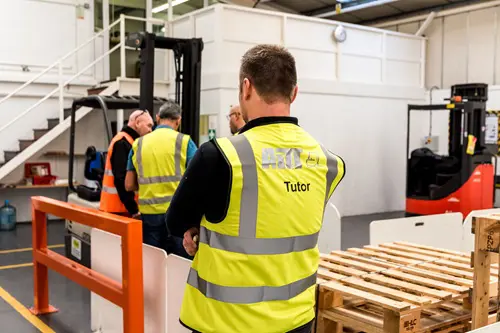
Why workplace transport training is changing in 2026 and what it means for employers
By AITT on 26 November 2025
New workplace transport training categories due in January mean it is essential to ensure operators of material handling equipment have the necessary training for the exact type of machine they use, and accredited training providers are an ideal source of advice and conversion training.


